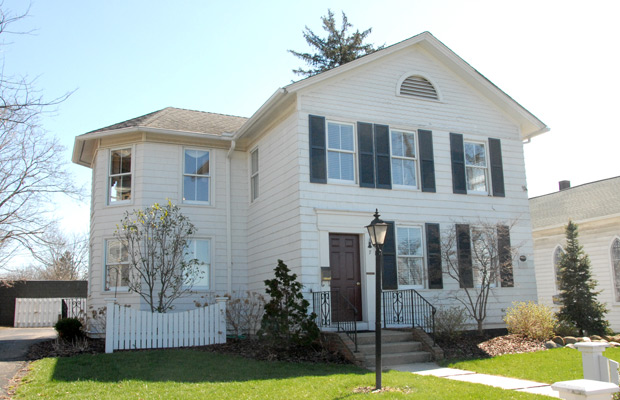NEXT MEETING: Thurs, April 10, 7:00pm at Barlow Community Center. Award-winning Hudson Author Joyce Dyer, brings new perspective to life of John Brown.
Captain Heman Oviatt House

Captain Heman Oviatt operated the first store on this territory, located about one mile south of the village center, and traded mostly with Native Americans. In 1805, he moved his business into the village, operating distilleries along with George Darrow, another Hudson pioneer. In 1825, this house appears on the tax duplicate in his name, valued at $300. Heman Oviatt was Hudson’s first mayor, one of the founders of the Congregational Church and of Western Reserve College, and the contractor for the first college buildings.
In 1836, Oviatt endowed a professorship of sacred rhetoric in the theological department of Western Reserve College; in 1906, it was renamed the Oviatt Professorship of English and is now the oldest endowed and named professorship at Case Western Reserve University.
In 1838, Captain Oviatt deeded his 114-acre farm — the entire south parts of Great Lots 56 and 57, south of Aurora Street and east of the village green — to Western Reserve College. Included in the conveyance was a house, identified on the tax duplicate as “frame house – H. Oviatt,” still valued at $300. In 1840, Western Reserve College deeded the property to the Reverend Mason Grosvenor in payment for services. The Reverend Grosvenor conducted the Hudson Young Ladies’ Seminary in the house for a short time; it continued as a schoolhouse under a series of teachers until 1845.
St. Mary’s Church bought the property in 1888 and remodeled the Heman Oviatt house for use as a rectory. A modernization in the late 1800s added the bay window and the scalloped siding in the gable.
The house has both Federal and Greek Revival elements including front-facing gable and fanlight, and it retains, despite alterations, its original silhouette.